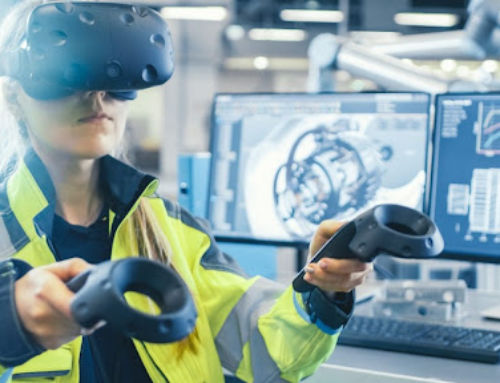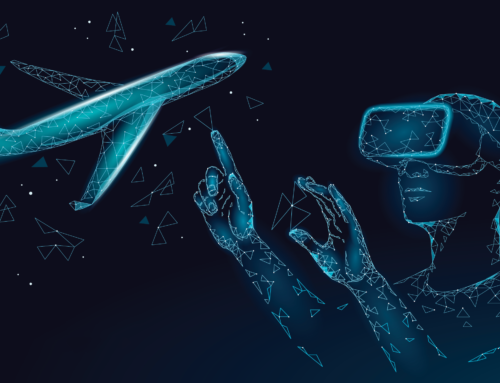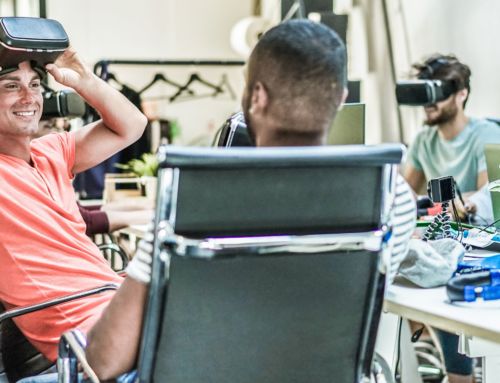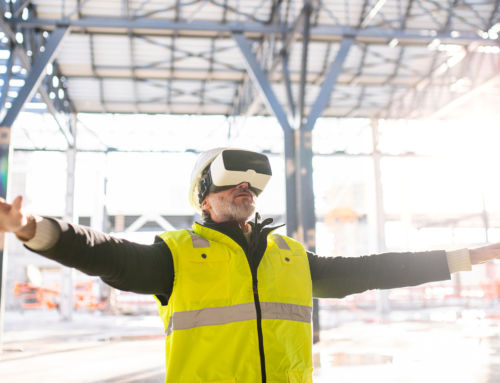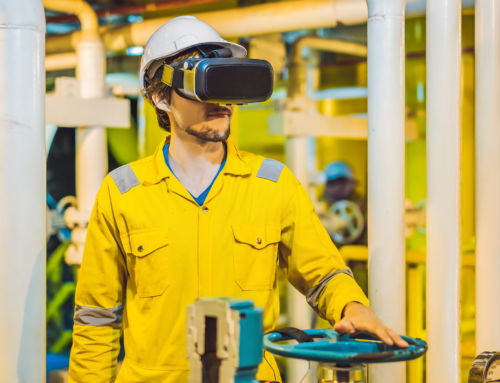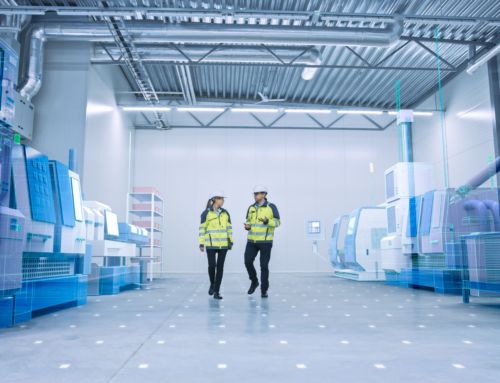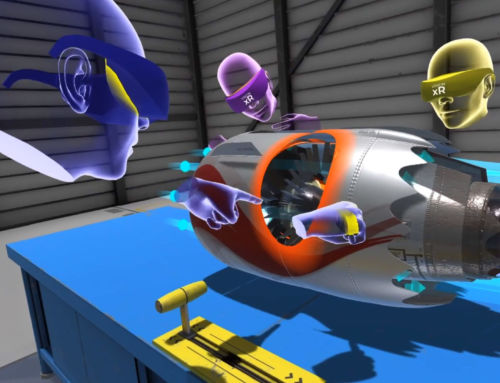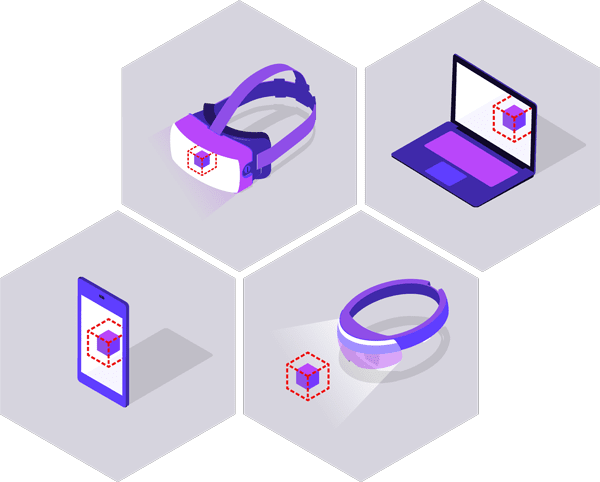Key Takeaways
Imagine showing employees how to respond in an on-site health and safety scenario. Or what about transporting your customers to Peru where they can see how your product is helping the less fortunate? Or how about showing prospective buyers a property – all without anyone stepping foot through the front door?
Thanks to developments in virtual reality, these scenarios are now possible through the power of a headset. And it’s just a fraction of the reasons why the global market for VR is expected to exceed $269.9 billion by 2024.
With that said, although using virtual reality opens doors to new ways of working, it also comes with some disadvantages. Let’s take a look.
Use of VR in training and development
Since the global shake-up caused by the pandemic, more and more businesses have become wise to the practical applications of virtual reality.
Before then, it was a concept that belonged in sci-fi movies or, at most, a way to enhance gaming experiences. But with businesses forced to change their ways of working, it’s now one of the go-to tools for corporate training and development.
If you need further clarification about its popularity, a report shared by PwC found VR has already enhanced 824,634 jobs with a global GDP boost of £13.5 billion. But why is that?
Well, apart from potentially being a cheaper alternative to in-person training, VR offers employees risk-free experiences to enhance skillsets required within their roles.
It provides a virtual platform where users replicate tasks and develop a deeper understanding, either as an individual or with colleagues who could be physically located thousands of miles away.
What’s more, by opting for a virtual environment users can learn autonomously where they control their own learning at their own pace. This is one of the reasons VR has been proven to cut training time by 40 percent, with employee performance said to improve by 70 percent.
They’re some serious numbers and its why so many industries are keen to integrate virtual reality, not just in training, but in all aspects of business. Here are some examples.
Industries that use VR
Construction
By incorporating VR technology, the construction industry has made huge strides in health and safety training and professional development.
As a sector with one of the highest fatality rates worldwide, the addition of virtual training has better prepared employees for working on site, as well as making upskilling more accessible.
Healthcare
Using VR technology in healthcare has become all but standard practice for many institutions. Its practical applications have been employed across many areas of the sector such as education, training, pain relief management and trauma therapy.
Marketing
As part of our transition into a digital world, marketing efforts have adapted to new consumer habits. Take TOMS®, for example. The use VR to send customers on a ‘giving trip’.
In just three-and-a-half minutes, users are transported to Peru to meet children who benefit directly from your in-store purchase. It’s powerful marketing that’s pioneered the possibility of VR in retail. Check it out.
Product design
To sidestep the costly business of manufacturing and shipping physical prototypes, design teams can now test and develop products in a virtual space accessible from anywhere with Wi-Fi.
As well as speeding up the overall design process, it also means colleagues can be transported to important design briefs, meetings and reviews in just a few seconds. No commuting required.
Real estate
Virtual reality has completely transformed the landscape for selling houses. In fact, according to a Coldwell Banker survey, 77% of homebuyers expect a virtual viewing option when enquiring about a property.
But viewing a property through VR isn’t its only application. Because through software developments, prospective buyers can now see how their furniture might look in their new home. And all without having to leave their sofa.
Disadvantages of using VR training
Despite the limitless number of practical applications virtual reality offers businesses, here are a few potential disadvantages you should consider before investing.
Human connection
Although VR makes it possible for colleagues to collaborate, a high percentage of its usage involves single users connected to immersive
software. Potentially, it could mean real-life interactions in traditional learner environments could be devalued.
Addiction
As we delve into a world of technology, there is a concern virtual reality could become addictive for users, especially if their interests in VR surpasses interests in the real world.
Up-front costs
Between the hardware and software required for training, businesses can expect to outlay anything from $20,000 upwards. The good news, however, is that as VR becomes more popular, development costs will start to fall.
Side effects
Some motion sensitive users have experienced physical side effects including headaches, nausea and eyestrain. It’s for this reason businesses might choose to offer a hybrid training program to cater for learners who feel uneased at the thought of using VR.
Closing thoughts
Despite the potential disadvantages associated with virtual reality, it still stands as the fastest-growing training tool for businesses across multiple industries.
By using VR, employees experience and respond to life-like scenarios that stretch far beyond the four walls of traditional learning. It offers a risk-free opportunity to apply knowledge, develop understandings and feel more confident in their day-to-day roles.
Of course, with change comes resistance – and some learners may feel reluctant to try VR. But with data suggesting it accelerates learning, retainment and engagement, it becomes difficult for businesses to ignore its presence.
No matter your scalability requirements, immersive technology continues to push boundaries for what’s possible in corporate training. If you’d like to learn how VR can boost your business revenue, feel free to get in touch to book a demo.
Key Takeaways
Imagine showing employees how to respond in an on-site health and safety scenario. Or what about transporting your customers to Peru where they can see how your product is helping the less fortunate? Or how about showing prospective buyers a property – all without anyone stepping foot through the front door?
Thanks to developments in virtual reality, these scenarios are now possible through the power of a headset. And it’s just a fraction of the reasons why the global market for VR is expected to exceed $269.9 billion by 2024.
With that said, although using virtual reality opens doors to new ways of working, it also comes with some disadvantages. Let’s take a look.
Use of VR in training and development
Since the global shake-up caused by the pandemic, more and more businesses have become wise to the practical applications of virtual reality.
Before then, it was a concept that belonged in sci-fi movies or, at most, a way to enhance gaming experiences. But with businesses forced to change their ways of working, it’s now one of the go-to tools for corporate training and development.
If you need further clarification about its popularity, a report shared by PwC found VR has already enhanced 824,634 jobs with a global GDP boost of £13.5 billion. But why is that?
Well, apart from potentially being a cheaper alternative to in-person training, VR offers employees risk-free experiences to enhance skillsets required within their roles.
It provides a virtual platform where users replicate tasks and develop a deeper understanding, either as an individual or with colleagues who could be physically located thousands of miles away.
What’s more, by opting for a virtual environment users can learn autonomously where they control their own learning at their own pace. This is one of the reasons VR has been proven to cut training time by 40 percent, with employee performance said to improve by 70 percent.
They’re some serious numbers and its why so many industries are keen to integrate virtual reality, not just in training, but in all aspects of business. Here are some examples.
Industries that use VR
Construction
By incorporating VR technology, the construction industry has made huge strides in health and safety training and professional development.
As a sector with one of the highest fatality rates worldwide, the addition of virtual training has better prepared employees for working on site, as well as making upskilling more accessible.
Healthcare
Using VR technology in healthcare has become all but standard practice for many institutions. Its practical applications have been employed across many areas of the sector such as education, training, pain relief management and trauma therapy.
Marketing
As part of our transition into a digital world, marketing efforts have adapted to new consumer habits. Take TOMS®, for example. The use VR to send customers on a ‘giving trip’.
In just three-and-a-half minutes, users are transported to Peru to meet children who benefit directly from your in-store purchase. It’s powerful marketing that’s pioneered the possibility of VR in retail. Check it out.
Product design
To sidestep the costly business of manufacturing and shipping physical prototypes, design teams can now test and develop products in a virtual space accessible from anywhere with Wi-Fi.
As well as speeding up the overall design process, it also means colleagues can be transported to important design briefs, meetings and reviews in just a few seconds. No commuting required.
Real estate
Virtual reality has completely transformed the landscape for selling houses. In fact, according to a Coldwell Banker survey, 77% of homebuyers expect a virtual viewing option when enquiring about a property.
But viewing a property through VR isn’t its only application. Because through software developments, prospective buyers can now see how their furniture might look in their new home. And all without having to leave their sofa.
Disadvantages of using VR training
Despite the limitless number of practical applications virtual reality offers businesses, here are a few potential disadvantages you should consider before investing.
Human connection
Although VR makes it possible for colleagues to collaborate, a high percentage of its usage involves single users connected to immersive
software. Potentially, it could mean real-life interactions in traditional learner environments could be devalued.
Addiction
As we delve into a world of technology, there is a concern virtual reality could become addictive for users, especially if their interests in VR surpasses interests in the real world.
Up-front costs
Between the hardware and software required for training, businesses can expect to outlay anything from $20,000 upwards. The good news, however, is that as VR becomes more popular, development costs will start to fall.
Side effects
Some motion sensitive users have experienced physical side effects including headaches, nausea and eyestrain. It’s for this reason businesses might choose to offer a hybrid training program to cater for learners who feel uneased at the thought of using VR.
Closing thoughts
Despite the potential disadvantages associated with virtual reality, it still stands as the fastest-growing training tool for businesses across multiple industries.
By using VR, employees experience and respond to life-like scenarios that stretch far beyond the four walls of traditional learning. It offers a risk-free opportunity to apply knowledge, develop understandings and feel more confident in their day-to-day roles.
Of course, with change comes resistance – and some learners may feel reluctant to try VR. But with data suggesting it accelerates learning, retainment and engagement, it becomes difficult for businesses to ignore its presence.
No matter your scalability requirements, immersive technology continues to push boundaries for what’s possible in corporate training. If you’d like to learn how VR can boost your business revenue, feel free to get in touch to book a demo.







